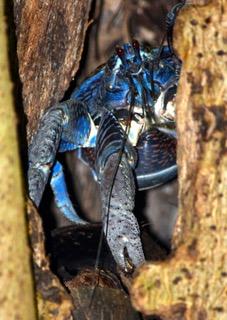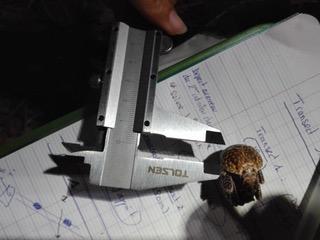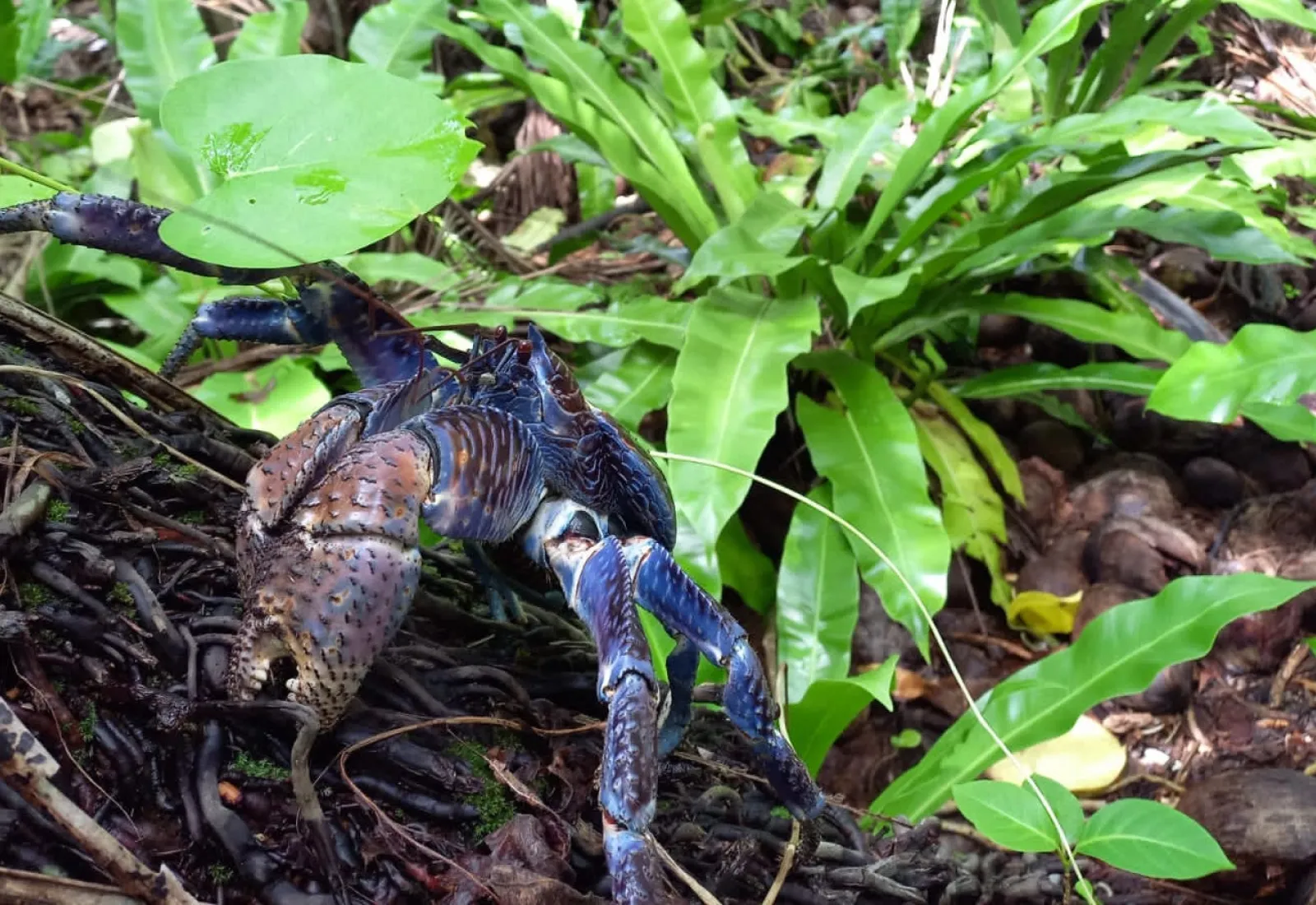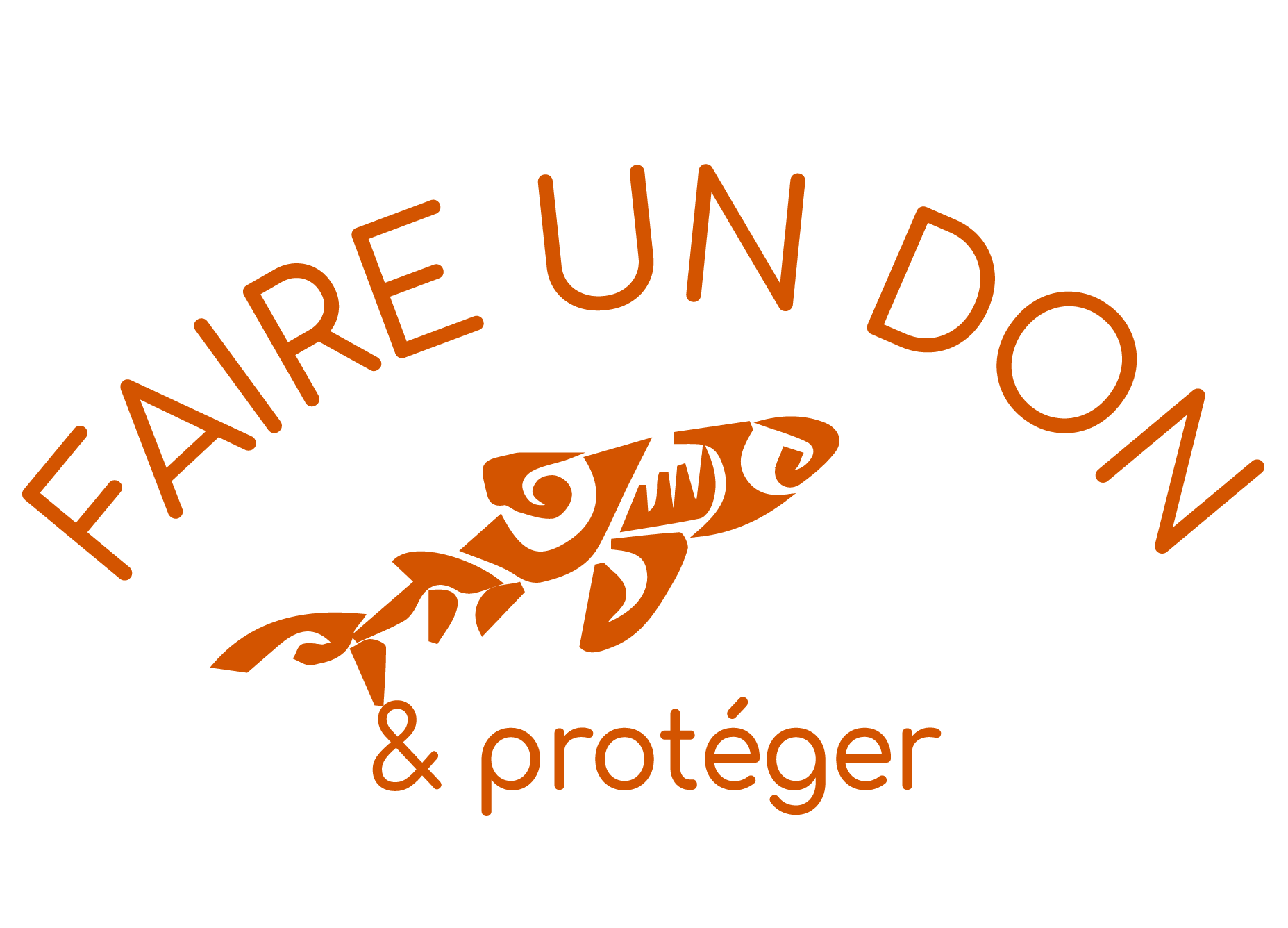
In this project we carried out a study to :
- continue the inventory of conconut crab individuals (size, sex, number) on three motu on the atoll of Tetiaroa : Honuea, Reiono and Tiaraunu
- specify the habitats according to their stage of development
- continue the statistical analysis to evaluate the population evolution over time
- evaluate the impact of rat eradication on the coconut crab population.
Three sessions of coconut crab monitoring were carried out in 2022, 2023. Transects are done with coconut bait placed 10 meters away from each other. Bait are set up in the day and coconut crabs are counted during the night, along the transect. Sexes and thoracic length are recorded. For every monitoring session the same transects are used to compare the number of individuals.
Results of this study show new maximums concerning the number of individuals by transect in the 3 study sites and this number is increasing compared to previous study carried out by the organisation.

About thoracic length of coconut crabs :
- The rat eradication seems to have an impact on the size : there are more small individuals compared to the studies done before rat eradication
- On the average, males are bigger than females
Females with eggs are observed with the highest proportion between December and January and have been observed between the 12th of November and the 26th of March.
Moreover, the biggest individual ever observed in Tetiaroa before have been reported this year, with a thoracic length of 87 mm.
In future directions it would be interesting to study more the larval recruitment of this species to understand better their biological cycle.



